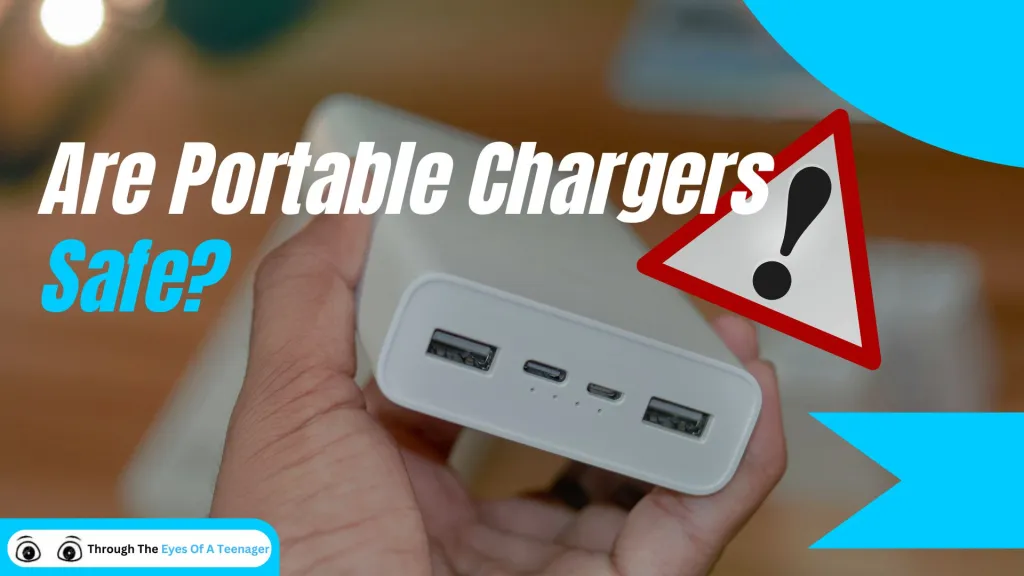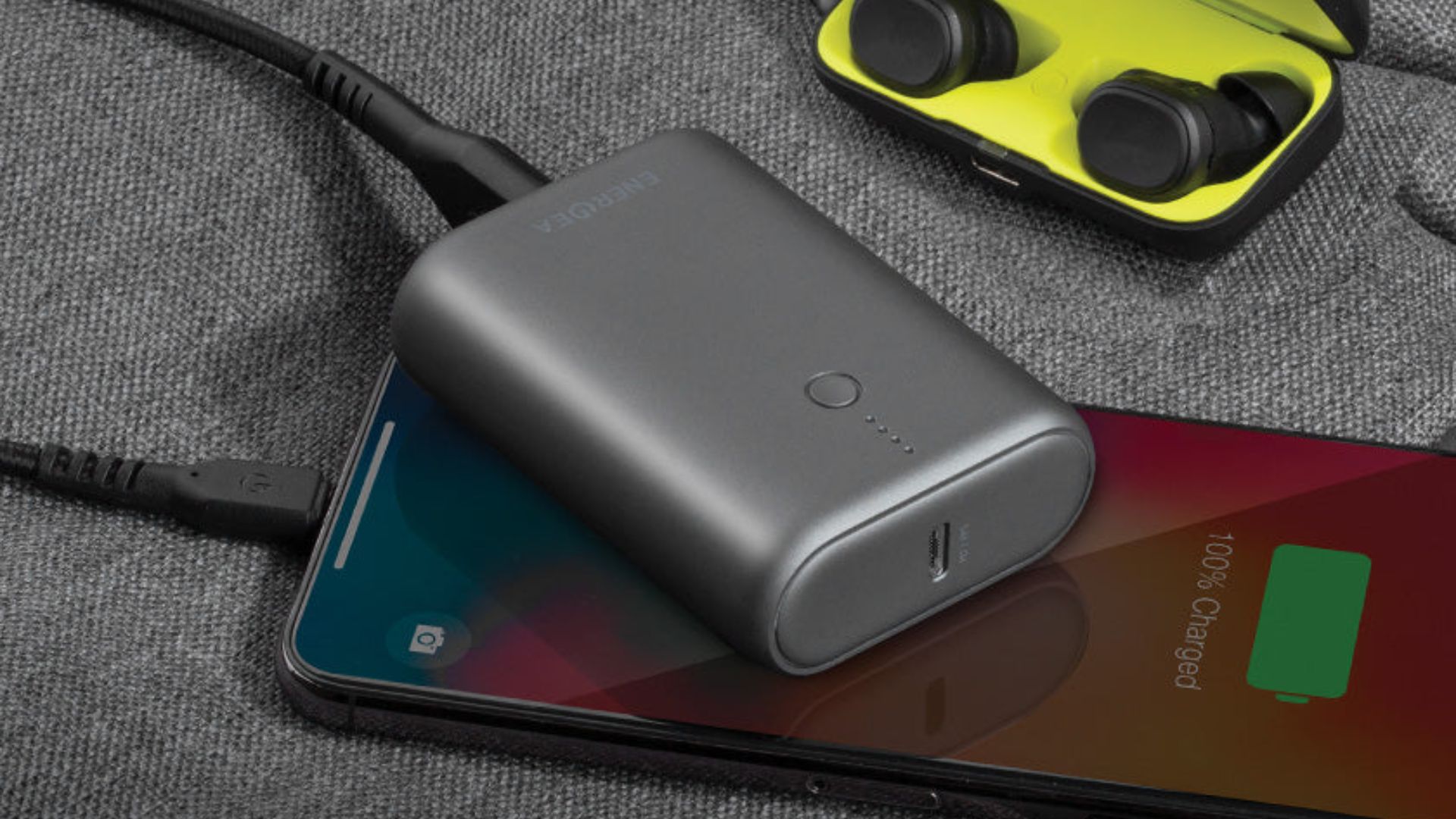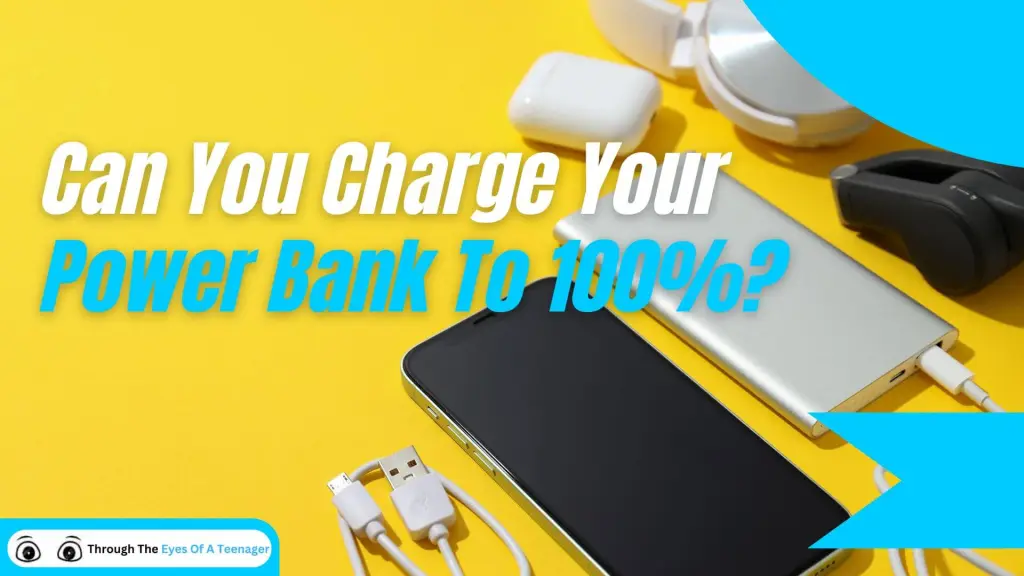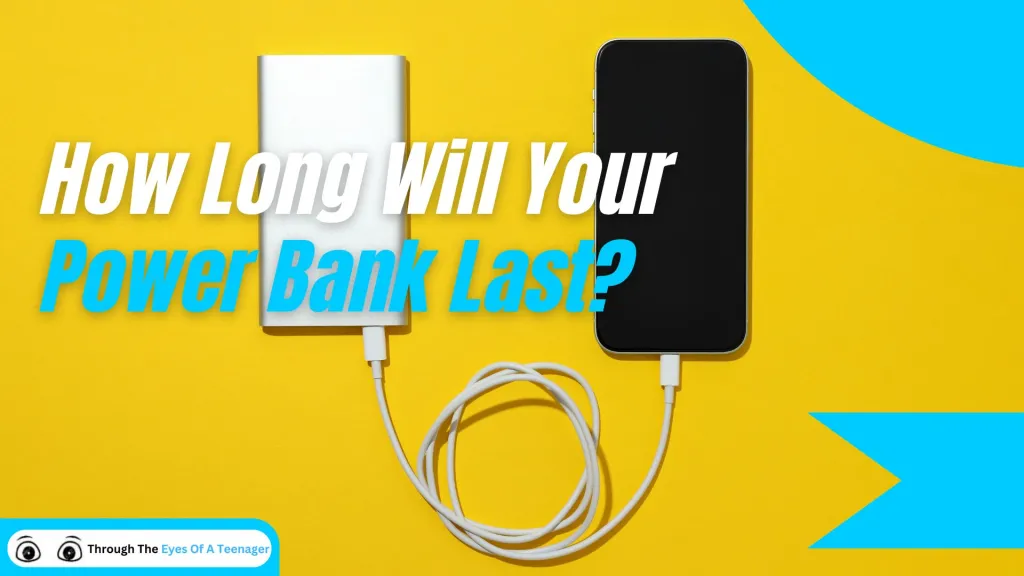Portable chargers have become essential in 2024, keeping phones, tablets, and gadgets powered when outlets aren’t available. However, safety concerns are on the rise, with 37% of consumers expressing worries about potential risks.
While these devices are total lifesavers during commutes, trips, or busy days, not all portable chargers are the same.
This article explores the safety of portable chargers, helping tech lovers, frequent travelers, and anyone with battery anxiety make informed decisions. Learn about potential risks, how to choose a safe charger, and best practices to stay powered up safely.
Quick Summary:
- Portable chargers store energy in rechargeable batteries and allow you to charge devices via USB. Which makes them ideal for travel, outdoor activities, and emergency situations.
- Safety risks include overheating, short circuits, and explosions, but following safety guidelines and selecting quality brands can reduce these hazards.
- To choose a safe charger, look for certifications like UL or CE and prioritize brands with a good reputation. Also ensure the charger has safety features like overcharge protection.
Table of Contents:
Understanding Portable Charger Basics
A portable charger, is a compact backup battery that stores energy to recharge devices like phones and tablets on the go. They vary by type, from compact chargers for short trips to high-capacity, solar, or wireless options. With all of them using rechargeable batteries to transfer power efficiently.

What Exactly Is a Portable Charger?
A portable charger is a compact device that stores electrical energy to recharge your gadgets. It basically functions as a backup battery, ready to provide juice to your phone or tablet whenever you’re away from an outlet. These chargers are essentially power banks, designed to give you peace of mind when your device is running low. If you want to know more about portable chargers and the difference between portable chargers and power banks, click here.
Portable chargers come in all shapes and sizes, and their functionality can vary. From solar charged portable chargers to simple power banks, they all have a rechargeable battery inside that charges your devices.
Types of Portable Chargers
Not every portable charger is made for the same purpose. There are different types that serve various needs. Here are a few notable ones you should know about:
- Compact Chargers: These are the lightweight, everyday chargers you toss into your bag or pocket. They typically hold enough power to charge your phone once or twice and are great for short trips.
- High-Capacity Chargers: Larger in size, these chargers can power devices multiple times over. If you’re the type of person who needs a charger for your phone, tablet, and laptop, this type is ideal.
- Solar Chargers: Perfect for outdoors, solar chargers harness sunlight to recharge. While they aren’t the fastest option, they are excellent for hiking or camping when no outlets are around.
- Wireless Chargers: These chargers let you power up without plugging in a cable. They’re perfect for devices that support wireless charging, but keep in mind that they tend to be slower.
How Do They Work?
Portable chargers use lithium-ion or lithium-polymer batteries to store power. When plugged into an outlet, the charger stores energy. Once it’s full, it can transfer that energy to your device when you need it.
Simple, right? But there’s more to it. Inside these devices, there are circuit boards that regulate how power flows, making sure your phone doesn’t get overloaded.
Get all the latest post on through the eyes of a teenager straight in your inbox.
Subscribe to stay updated, it’s free!
Understanding how they work can help you appreciate the importance of choosing a good, safe product.
Potential Safety Risks of Portable Chargers
Portable chargers are generally safe if purchased from reputable brands, as these include safety features like overcharge protection. Avoid cheap or counterfeit chargers, as they often lack these safeguards and can overheat, short circuit, or even pose fire risks.

So here’s everything you need to know to stay safe when buying a portable charger:
Lithium-Ion Batteries: The Double-Edged Sword
Most portable chargers use lithium-ion batteries, which are popular for their ability to store a lot of energy in a compact form. However, lithium-ion batteries can be dangerous if mishandled.
If one of these batteries is punctured or overcharged, it can overheat, potentially leading to a fire or explosion.
It’s essential to purchase your charger from a reputable brand to avoid such risks. Cheap, off-brand chargers might cut corners when it comes to quality control, which is a risk you don’t want to take.
Overheating: A Red Flag
A little warmth during charging is fine, but if your portable charger is getting too hot to touch, than you should immediately unplug it. Overheating is a big issue because it can damage the charger or cause it to catch fire.
The best way to avoid overheating is to buy a charger with built-in safety features like overcharge protection and thermal sensors.
Here are some of my best tips to avoid buying an unsafe charger:
- Choose certified chargers: Look for certifications like UL or CE for safety assurance.
- Stick to trusted brands: Avoid cheap, off-brand options without a reputation for quality.
- Check the specs: Ensure the voltage and wattage match your device’s requirements.
- Buy from reliable retailers: Shop at trusted stores to avoid counterfeit products.
Counterfeit Chargers: A Major No-No
While you may find counterfeit chargers on bargain websites or in discount stores, they’re not worth the risk. These products may look like just like the real ones, but they often lack crucial safety features.
Poor-quality components, faulty wiring, and lack of proper testing can lead to short circuits, overheating, or even fires. Stick to trusted brands and retailers to ensure you’re getting a quality product. Here are some of my favourite brands and why you should check them out:
| Brand | Why You Should Check Them Out |
|---|---|
| Anker | Known for durable chargers with safety features like overcharge protection and advanced testing. |
| Belkin | Offers certified chargers with excellent build quality and compatibility with multiple devices. |
| Aukey | Combines affordability with reliable performance and essential safety certifications. |
| Apple | Perfect if you have an iPhone, with chargers designed specifically to meet their performance needs. |
| Samsung | Trusted for high-quality chargers optimized for their own devices and many other brands. |
Short Circuit Risks
A short circuit happens when electricity flows along an unintended path, which can cause the device to malfunction.

A cheap charger or damaged cables can easily cause a short circuit. Even though most modern chargers have built-in protections against this, it’s always best to inspect your charger and cables for damage before use. You don’t have to get to paranoid over it, but just check every now and then.
Manufacturing Issues
Even reputable brands occasionally slip up. Defects during manufacturing can lead to faulty chargers, which may pose safety risks. It’s important to always stay updated on any product recalls if something happened to be defect. Also check for reviews or certifications, if you’re unsure about the authenticity of a charger.
How to Choose a Safe Portable Charger
To choose a safe portable charger, look for safety certifications like UL, CE or FCC. Also choose trusted brands and beware of too-good-to-be-true deals, and look for safety features one the manufacturer’s website or the packaging.
So, here’s everything you need to keep in mind:
1. Look for Safety Certifications
Always check for certifications like UL, CE, or FCC. These labels indicate that the charger has been tested for safety and meets specific standards. A charger without these certifications is a red flag.
If you can’t find these certifications on your portable chargers, then try to find it on the packaging or the manufacturer’s website. You can also search for them in their databases like the FC searchable database, or the UL searchable database.
CE certification does not have it’s own searchable database, so you’ll have to look on the packaging for that one. However, if you portable charger has a FC and UL certificate, then I’d say it’s pretty safe.

2. Choose Trusted Brands
Brands like Anker, RAVPower, and Belkin have built a reputation for high-quality, safe products. They undergo extensive testing, and you can rely on their safety features. Investing in a well-known brand might cost a bit more, but it’s worth it for the peace of mind.
To make it even easier, here’s a quick list of some more of my favourite portable charger brands:
- Aukey
- RavPower
- Zendure
- Baseus
- Goal Zero
3. Understand the Battery Capacity
Don’t just go for the highest capacity charger you can find. Higher capacity doesn’t always mean better, especially if it results in a bulky, difficult-to-carry charger.
Consider how many times you need to charge your device and choose a charger that fits your needs. A 5,000mAh charger is perfect for a backup for your phone, while a 10,000mAh charger might be more suitable for tablets. For laptops I’d recommend somewhere between 20,000- and 50,000 mAh. To learn more about how many mAh your laptop needs, click here.
4. Look for Safety Features
Safety features like overcharge protection, overheat sensors, and short-circuit prevention are non-negotiable when it comes to portable chargers. These features keep your device and your charger safe, especially when you’re charging overnight or in a pocket.

If a portable charger doesn’t have this, I’d advise you to look somewhere else. This ensures your phone and charger (and you) stay safe.
5. Beware of Too-Good-to-Be-True Deals
If the price is too low for the specs or the brand doesn’t have a good track record, consider it a warning. Counterfeit chargers are often priced significantly lower than their legitimate counterparts. Stick to what you know, and be wary of rock-bottom prices.
Best Practices for Portable Charger Safety
Now that you know how to pick a safe charger, let’s cover how to keep it safe and functioning well:

1. Store Your Charger Properly
Heat is one of the biggest enemies of portable chargers. So, store them in a cool, dry place. Also avoid leaving them in direct sunlight or near heat sources like radiators or ovens.
Here are some places I’d recommend storing your charger to avoid it overheating:
- Desk drawer
- Nightstand
- Backpack pocket
- Laptop bag
2. Avoid Overcharging
While most modern chargers have overcharge protection, it’s still a good practice not to leave them plugged in for too long. Charging overnight occasionally is fine, but don’t make a habit of it.
3. Check Cables and Ports Regularly
Inspect your charger and cables for any visible signs of damage. If you notice any fraying or wear on the cables or connectors, it’s time to replace them.
Never use a damaged charger or cable. This is one of the easiest ways to cause either a short circuit or to get electrocuted. Trust me, you don’t want 20 V going through your body while trying to plug in your phone.
4. Follow Manufacturer’s Guidelines
Manufacturers often provide guidelines on optimal charging conditions. For instance, they might advise charging between 20% and 80% for longer battery life. Stick to these recommendations if you want to get the most out of your portable charger.
To make it easy here are some of my recommendations that will ensure the safety and longevity of your portable charger:
| Recommendation | Details |
|---|---|
| Avoid extreme temperatures | Keep the charger in a cool, dry place to prevent overheating or damage. |
| Don’t overcharge | Unplug the charger once it’s fully charged to extend battery lifespan. |
| Use the right cables | Ensure the cables are compatible and not worn out to avoid malfunctions. |
| Store it properly | Store the charger in a safe place, away from sharp objects or moisture. |
| Regular maintenance | Charge the battery regularly, even if it’s not in use, to keep it active. |
5. When to Replace Your Charger
If your portable charger is bulging, leaking, or showing signs of overheating, it’s time to throw it in the bin. Don’t try to fix a damaged charger yourself, as this can be extremely dangerous.

Myth-Busting Portable Charger Safety
Let’s tackle some common myths you might have heard about portable chargers.
Myth 1: Portable Chargers Are Banned on Planes
False! As long as your portable charger is under 100Wh (watt-hours), it can be carried onto an airplane no problem. Most portable chargers fall well within this limit.
Do always check the airline’s specific rules, as it might be different in your country.
Myth 2: Cheap Chargers Are Just as Safe as Expensive Ones
While it might be tempting to go for the cheapest option, you’re often sacrificing safety. Counterfeit chargers or poorly made products can be dangerous. Quality chargers from trusted brands are worth the extra investment.
Myth 3: All Chargers Overheat
Overheating isn’t a given. If your charger is overheating regularly, it might be a sign of a defective product. A good charger will always stay cool during regular use.
Are Portable Chargers Safe – Conclusion
Portable chargers are, a safe and practical solution to keep your devices powered up on the go. However, with so many options available, it’s crucial to understand the risks involved.
By choosing a reputable charger, and following safety guidelines, you can enjoy the convenience of always having power without the worry.
So, whether you’re heading to school or traveling don’t let a low battery ruin your day. Find a safe, reliable portable charger, and power up with confidence.
FAQ’s
Portable chargers generally last between 2 to 3 years, depending on usage and care. Factors like how often you charge it, how well you maintain it, and the environment in which it’s used (extreme temperatures, moisture, etc.) can affect its lifespan. Over time, the battery’s capacity will decrease, so you might notice that it holds less charge after a couple of years of heavy use. To maximize the lifespan, avoid letting the battery drain completely or staying at 100% for too long.
Yes, you can charge some laptops with portable chargers, but there are limitations. Laptops usually require more power than phones or tablets, so you’ll need a high-capacity power bank with a USB-C or specialized laptop charging port. Make sure the charger supports the required wattage for your laptop, as most standard power banks won’t provide enough juice for a full charge. Be sure to check the specifications for both your laptop and charger to ensure compatibility.
It’s generally safe to leave a portable charger plugged in overnight, especially if the charger has built-in safety features like overcharge protection. However, to extend the lifespan of the charger and reduce any risk of overheating, it’s better not to leave it plugged in for prolonged periods once it’s fully charged. Modern power banks typically stop charging once they reach full capacity, but it’s always a good idea to check the product’s manual for safety guidelines.













Redragon YAMA K550 Review: Feature-Packed & Affordable
Looking for a premium full-size keyboard under $100? The Redragon YAMA K550 delivers RGB, macros, and serious value.
How Charging Your Power Bank to 100% Can Damage It
Learn why you shouldn’t charge your power bank to 100% and tips on extending your power banks lifespan.
Power Bank Lifespan: How Many Charges Will You Get?
Learn how to make your power bank last 3-5 years with expert tips on usage, storage, and maintenance. Discover the secrets to longer battery life!
Portable Charger Technologies: A Complete Guide to Fast Charging in 2024
Discover the latest portable charger technologies, from USB-PD to GaN charging. Learn which fast-charging standard is best for your devices and how to choose the right power bank.
Can Portable Chargers Overheat? Understanding the Risks and Safety Measures in 2024
Discover the potential risks of portable charger overheating, learn why it happens, and get crucial safety tips to protect your devices and yourself in 2024.